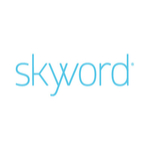TechnologyCounter provides genuine, unbiased real user reviews to help buyers make informed decisions. We may earn a referral fee when you purchase through our links, at no extra cost to you.
List of 15 Best Content Creation Tools
Showing 1 - 15 of 48 productsOutgrow is a dynamic and innovative software platform that helps businesses of all sizes create highly engaging and personalized experiences for their customers. With Outgrow, you can easily build interactive calculators, quizzes, assessments, and ot...Read Outgrow Reviews
Uberflip is a platform that helps businesses create engaging and personalized experiences for their audiences. With its user-friendly interface technology, Uberflip allows companies to easily create and distribute content across multiple channels, ma...Read Uberflip Reviews
ContentStudio is an all-in-one content creation and management tool designed for marketers and businesses of all sizes. With its powerful features and user-friendly interface, ContentStudio streamlines the process of creating, curating, and managing...Read ContentStudio Reviews
SurveyMonkey is a leading online survey platform that has revolutionized the way organizations gather valuable insights. With its user-friendly interface and robust features, SurveyMonkey has become a go-to tool for businesses of all sizes, allowing...Read SurveyMonkey Reviews
Joomag is a versatile content creation platform that empowers individuals and businesses to design, publish, and distribute their digital publications with ease. With a user-friendly interface and a wide range of customizable features, Joomag allows...Read Joomag Reviews
Snappa is a design software for creative professionals, businesses, and individuals looking to bring their visual content to life with ease. With its intuitive and user-friendly interface, anyone can create stunning graphics, social media posts, and...Read Snappa Reviews
Foleon is a dynamic and innovative content creation platform that helps businesses and individuals revolutionize their digital publications. With its intuitive design and powerful features, Foleon empowers users to produce stunning and interactive co...Read Foleon Reviews
WIDEO, the innovative video editing software that streamlines the process of creating stunning videos. With its user-friendly interface and wide range of customizable features, WIDEO empowers users to produce high-quality videos in a seamless is a ma...Read WIDEO Reviews
GatherContent streamlines the content creation process by providing a user-friendly platform for teams to collaborate, plan, and organize their content. With its intuitive interface is a workflow, GatherContent helps businesses produce high-quality c...Read GatherContent Reviews
Venngage, the ultimate tool for creating compelling visual content. From eye-catching infographics to engaging presentations, Venngage offers a seamless and user-friendly platform for all your design needs. With a wide range of templates, icons, and...Read Venngage Reviews
Skyword is a content creation platform that allows businesses to connect with expert writers and scale their content production. With a seamless and user-friendly interface, Skyword empowers brands to tell their unique stories and engage with their t...Read Skyword Reviews
Ion Interactive is a software that helps businesses create engaging and personalized experiences for their customers. With its innovative features and user-friendly interface, Ion Interactive allows marketers to easily create interactive content and...Read ion interactive Reviews
UpContent is a tool for content discovery and curation. With its advanced features and user-friendly interface, it makes finding relevant and engaging content easier than ever before. Whether youre a marketer, blogger, or educator, UpContent is the p...Read UpContent Reviews
Tiled is an innovative and user-friendly software designed to revolutionize the way you create and share interactive content. With its intuitive interface and powerful features, Tiled allows you to easily transform your static assets into engaging an...Read Tiled Reviews
Ceros is a digital design platform that allows you to bring your creative visions to life, without any coding or technical expertise needed. With its intuitive interface and seamless collaboration tools, Ceros empowers you to create stunning interact...Read Ceros Reviews
- What Is Content Creation Tools?
- Top Reasons Why Businesses Need Content Creation Tools?
- What Are the Top Key Features of Content Creation Tools?
- What Are the Top Benefits of Content Creation Tools?
- What Are the Steps to Choose the Right Content Creation Tools?
- What Are the Types of Content Creation Tools for Different Industries?
- What Are the Technology Trends for Best Content Creation Tools?
- What Are the Deployment Options for Content Creation Tools?
What Is Content Creation Tools?
Content creation tools encompass a variety of instrumental resources utilized to generate diverse forms of content, including but not limited to written material, video editing, graphic design, and audio production. Content production tools can be utilized in a wide range of content creation endeavors, catering to both novice and expert practitioners.
Some examples of programs used for content creation are WordPress, Adobe Creative Suite, Final Cut Pro, and Audacity. WordPress is a widely used platform for blogging and content management, enabling users to conveniently generate, modify, and distribute web-based material.
AI tools for content creation are provided at no cost and offer a user interface that allows for editing with a drag-and-drop functionality. The Adobe Creative Suite encompasses a comprehensive array of software applications designed for content creation, including but not limited to video editing, graphic design, and audio recording.
The Creative Suite offers a robust set of tools for manipulating media files, enabling the creation of captivating visual and auditory content. Final Cut Pro is a software application utilized to edit video and audio within a timeline-based editing environment.
Final Cut Pro is equipped with robust tools and a user-friendly interface, facilitating the creation of high-quality video projects by users. Audacity is a cost-free software application utilized for audio editing, music composition, and live audio recording.
Audacity is equipped with a user-friendly interface and robust capabilities that facilitate the creation of exceptional audio experiences for various projects. In summary, content production tools are crucial for anybody seeking to generate content.
The best content creation tools provide individuals the opportunity to generate high-quality material for a wide range of projects. These tools facilitate and expedite the content creation process.
Top Reasons Why Businesses Need Content Creation Tools?
1. Automation: AI tools for content creation technologies can automate monotonous and repetitive operations, allowing individuals to allocate their time towards more strategic aims.
2. Streamlined workflow: Content creation platforms play a crucial role in streamlining and enhancing the content production process, hence empowering organizations to produce high-quality content more efficiently.
3. Cost savings: The utilization of tools for content creation One potential approach to mitigating the human and financial resources necessary for content development is through the implementation of automated processes.
4. Improved content customization: Content creation AI tools facilitate the customization of content to cater to distinct target audiences across various languages and markets.
5. Increased brand awareness: material creation tools play a pivotal role in facilitating enterprises' ability to attract novel clientele through the development of captivating and enlightening material, hence fostering enhanced exposure and credibility.
6. Improved engagement: The best AI tools for content creation can produce material of superior quality that effectively connects with specific target audiences and encourages engagement.
7. Scalability: The best content creation tools facilitate the process of scaling up businesses and effectively managing increasing quantities of content concurrently.
8. Unified platform: information production tools offer enterprises a comprehensive platform for the efficient management and dissemination of information across many platforms.
9. Greater insights: Content creation technologies offer firms significant insights into user behavior and preferences, hence facilitating enhanced targeting strategies.
10. Effective monitoring: material production technologies provide the real-time monitoring of user responses to material, so empowering organizations to make necessary adjustments to their plans.
11. Optimized search results: Automated content creation can enhance the material to optimize its visibility and generate more website traffic through search engine optimization techniques.
12. Adaptability: Content production tools possess the capability to swiftly and effortlessly adjust to evolving trends and improvements in search engines, hence maximizing their effectiveness.
13. Collaboration: The best AI content creation tools facilitate team collaboration and expedite the process of content development, ensuring efficiency and a seamless workflow.
14. Reuse and repurpose: material creation tools facilitate the convenient repurposing of material for diverse objectives across many platforms.
15. Improved analytics: The best content creation software offers firms comprehensive performance indicators for tracking the effectiveness of their content and evaluating return on investment (ROI).
What Are the Top Key Features of Content Creation Tools?
1. Text Formatting: Many top content creation tools possess text formatting features, including options for adjusting font size, color, boldness, italics, and underlining, which serve to enhance the aesthetic appeal of the content.
2. Inserting Pictures or Videos: The best content creation tools provide users with the ability to incorporate images or videos into their work, which can be obtained from several sources including local files, URL links, or other platforms such as Instagram and YouTube.
3. Automation: Automation capabilities enable content creators to systematically program and execute designated actions, such as scheduling the automatic publication of their work at predetermined times or dates.
4. Track Performance: Material production platforms frequently incorporate analytics and reporting functionalities, enabling users to assess the effectiveness of their material among their intended audience.
5. Embedding Content: Numerous content creation platforms afford users the capability to incorporate content from external websites, like YouTube and Vimeo. This functionality enables the augmentation of content with more information or alternative perspectives.
6. SEO Optimization: Numerous best software for content creation provide functionalities that enable users to enhance their material for search engine optimization (SEO), including the incorporation of keywords and meta tags. These features serve to enhance the likelihood of their content attaining a higher ranking within search engine results.
7. Collaboration: Content production platforms frequently include collaborative functionalities, such as internal comment threads, permission settings, and task assignments, facilitating seamless cooperation among numerous individuals.
8. Templating: Digital content creation tools provide users with pre-designed templates, eliminating the need to commence content creation from a blank canvas.
9. Content Storage: The best tools for content creation offer a centralized platform that facilitates the storage, accessibility, editing, and removal of content as required.
What Are the Top Benefits of Content Creation Tools?
1. Time Savings: The best AI tools for content creation are valuable in optimizing the content development process through the reduction of manual chores and the elimination of time-consuming operations, such as format conversion.
2. Save Money: The utilization of AI tools for content creation has the potential to mitigate expenses by minimizing labor costs and circumventing the financial repercussions commonly connected with human content development, which typically involve costly errors.
3. Automation: Content creation platforms provide users with the ability to automate a range of operations, encompassing research, editing, proofreading, and the development of visuals like graphics and photos.
4. Improved Collaboration: Content creation tools facilitate collaboration by offering features such as real-time editing, version control, and change tracking.
5. Increased Productivity: The utilization of content creation AI tools technologies has the potential to enhance the efficiency and productivity of content development by using automated workflow procedures.
6. Streamlined Approvals: work production technologies frequently offer automated approval pathways, enabling expedited and secure review, approval, and publication of work.
7. Optimization: The best content creation tools offer a range of functionalities that facilitate the optimization and promotion of content. These functionalities encompass analytics and optimization of various components such as images, text, metadata, headers, and other elements related to search engine optimization (SEO).
What Are the Steps to Choose the Right Content Creation Tools?
1. Research the available content creation tools: Please identify and compare the features of the most popular content creation tools within your sector. To make informed decisions regarding the effectiveness of various technologies, it is advisable to seek out user reviews and expert input.
2. Make a list of features you need: Consider the essential requirements for your content development tools. To effectively carry out the tasks at hand, it is imperative to ascertain the key attributes that are indispensable, encompassing editing functionalities, collaborative mechanisms, tools for content management, and other pertinent aspects.
3. Assess the processes you have in place: Develop a comprehensive framework delineating the requisite steps involved in the creation of content. This will assist in identifying suitable tools that align with the particular procedures being implemented.
4. Take into account the budget: Please provide an estimation of the money required for the allocation of AI tools for content creation.
5. Choose a suitable tool: After obtaining a comprehensive understanding of the many features, processes, and financial considerations, proceed to choose the application that most effectively aligns with your specific objectives. It is necessary to assess the adaptability of the application to prospective modifications.
6. Test the tool: It is crucial to conduct app testing before complete implementation to ascertain its compatibility with the workflow of the team. User testing is a valuable method for identifying potential issues or areas requiring development.
What Are the Types of Content Creation Tools for Different Industries?
1. Media and Entertainment: The aforementioned software encompasses video editing, photo editing, graphics and animation, as well as audio editing.
2. Education: Course authoring software, online quiz tools, and lecture capture and streaming tools are commonly utilized in the field of education. These technological resources play a significant role in enhancing the learning experience for students and facilitating the instructional process for educators.
3. Healthcare: The utilization of Electronic Medical Record (EMR) and Electronic Health Record (EHR) software, as well as medical data visualization software and digital medical imaging software, has become increasingly prevalent in the healthcare industry.
4. Retail and E-commerce: The aforementioned items encompass shopping cart software, e-commerce platform software, as well as web analytics and reporting tools.
5. Manufacturing: Computer-aided design (CAD) and computer-aided manufacturing (CAM) software, as well as product lifecycle management (PLM) software, are commonly utilized in various industries.
6. Public Relations: The program encompasses social media administration, content production, and management, as well as media monitoring and measurement.
7. Travel and Hospitality: The aforementioned software applications encompass mobile booking, internet content generation, and content scheduling functionalities.
What Are the Technology Trends for Best Content Creation Tools?
Content creation tools are among the most popular technology trends of recent years. As businesses and media outlets alike strive to create digital content that stands out, it is important to keep up with the latest developments in content creation technology.
Features such as machine learning and artificial intelligence are becoming increasingly prevalent the best AI tools for content creation, allowing for faster, more efficient work with greater accuracy.
Editors and publishers can use AI-controlled algorithms to detect and reduce plagiarism or grammatical errors in large amounts of text. In the creative space, tools such as Adobe Creative Cloud, InDesign, and Final Cut Pro offer powerful tools for creating visuals, videos, and podcasts.
Meanwhile, web-based tools such as Canva, Adobe Spark, and WeVideo offer easy-to-use, cloud-hosted tools for creating images and videos quickly. Social media scheduling tools, such as HootSuite, Buffer, and Sprout Social, are also becoming increasingly popular. These tools provide users with the ability to plan and schedule posts across multiple networks quickly and easily.
In addition, AI tools for content creation for creating interactive content, such as augmented and virtual reality, are becoming popular. These immersive experiences provide an opportunity to engage users uniquely and create content that resonates deeply with its audience.
Overall, the best content creation tools are those that use the latest technologies to make the creation and management of digital content easier and more effective.
What Are the Deployment Options for Content Creation Tools?
Deployment options for content creation tools include:
1. Desktop Software: Desktop software refers to a type of software that is acquired by users through downloading or purchasing and afterward installed on their personal computers. This software enables users to generate and manipulate various forms of digital information.
Illustrative instances encompass video editing software such as Adobe Premiere Pro and content writing tools such as Microsoft Word.
2. Cloud Software: Cloud software refers to software applications that are stored and operated on remote servers, with access being facilitated through internet connectivity. In recent years, there has been a notable surge in the popularity of this phenomenon, mostly due to its facilitation of collaborative content generation and the provision of users' content accessibility across several devices.
Illustrative instances encompass web-based graphic creation tools such as Canva, as well as online collaborative applications like Google Docs.
3. Mobile Apps: Mobile applications, sometimes referred to as mobile apps, are software tools that are specifically developed for use on mobile devices with the primary purpose of facilitating content creation. Frequently, these devices are equipped with interfaces that are designed for touchscreen functionality and possess capabilities that are tailored to the unique requirements of smaller-screen devices.
Illustrative instances encompass applications for picture editing, such as VSCO, as well as applications for illustration, such as Procreate.
4. Hardware Solutions: Hardware-based solutions provide comprehensive capabilities for complex multimedia creation tools through specialized devices. Illustrative instances encompass recording studio devices such as studio mixers and digital cameras.















